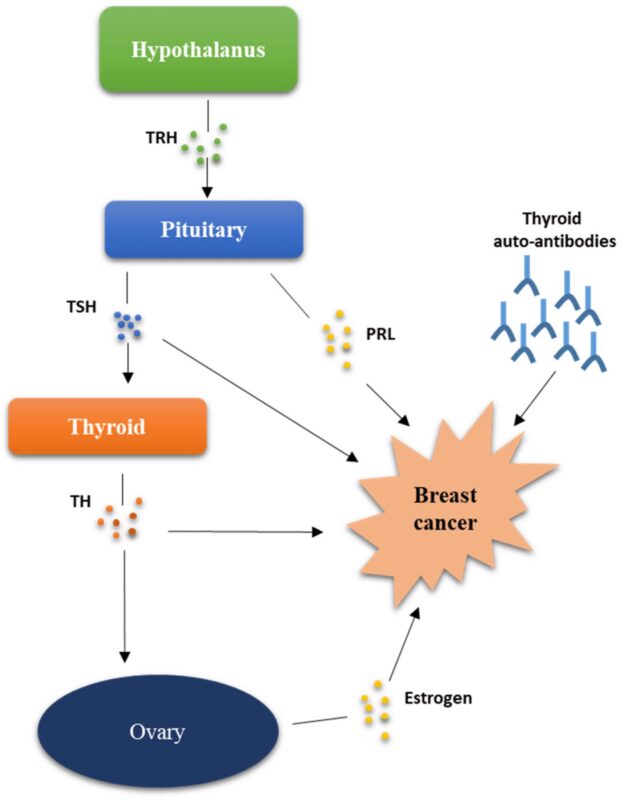Shahrin Ahmed, Medical Specialist at the Canadian Cancer Society, shared on X/Twitter:
“Secondary thyroid cancer is a risk factor for patients with breast cancer.
Modern medicine is characterized by the rapid development of imaging technology and comprehensive treatment. The prognosis for breast cancer is also improving as the early diagnosis rate continues to improve. The risk of developing secondary cancers increases as breast cancer patients live longer.
The hormone receptor is sensitive to both breast and thyroid organs. The hypothalamus pituitary target gland endocrine axis controls the occurrence of these two diseases in succession or simultaneously.
The Surveillance, Epidemiology and End Results (SEER) database was used to extract clinical data and survival outcomes for breast cancer patients registered between 2010 and 2019. At a ratio of 7:3, the selected patients were randomly divided into training and test datasets after matching the cases and controls with propensity scores.
Cox regression identified age, ethnicity, whether radiation therapy, tumor primary location, N stage, and M stage. To predict patients’ 3 and 5 year survival probabilities for secondary thyroid cancer in breast cancer patients, a risk factor nomogram was created that considers independent factors.
The 2023 American Cancer Statistical Report indicates that breast cancer remains among the top three most common cancers for women. Taking the top spot in expected new cases for women.
Modern medicine has experienced the rapid development of imaging technology and comprehensive treatment. The prognosis of breast cancer is improving as the early diagnosis rate continues to improve. The overall survival rate and disease-free survival rate of breast cancer patients have experienced a significant improvement.
The endocrine system and tumors in the head and neck are present. Both the breast and thyroid are organs that are sensitive to hormone receptors. The hypothalamus pituitary target gland endocrine axis regulates the occurrence of these two diseases in succession or simultaneously.
This study relied on data from the National Cancer Institute. Between 2010 and 2019, the database includes a total of 692,555 patients who were diagnosed with breast cancer.
In short, this study utilized univariate and multivariate cox analyses to identify the influencing factors of secondary thyroid cancer in breast cancer patients. The column-line diagram was established with success, and the calibration curves of the training and validation sets were properly fitted. The AUC and c-index were significant.
The secondary thyroid cancer in patients with breast cancer patients . As the age decreases, the ethnicity becomes more white. Whites and other races are exposed to radiation in the internal lower quadrant and other areas. The development of thyroid cancer is more likely to occur in breast cancer patients with N1 and M1 stages.”

Source: Shahrin Ahmed/X
